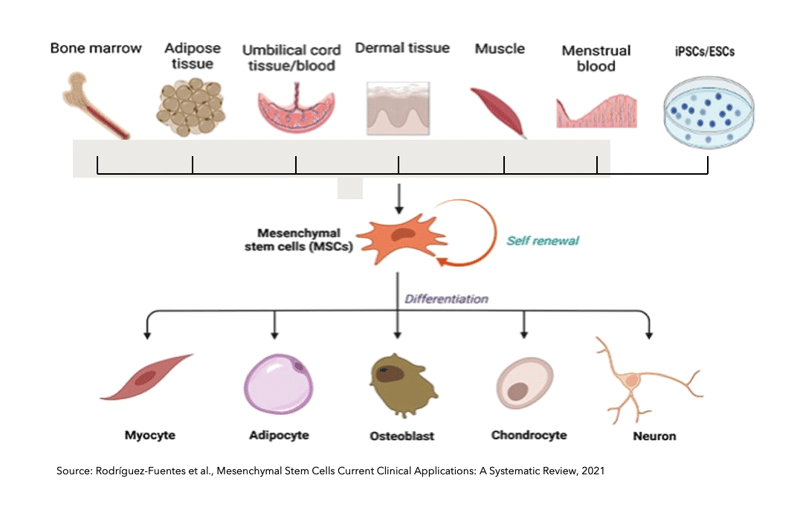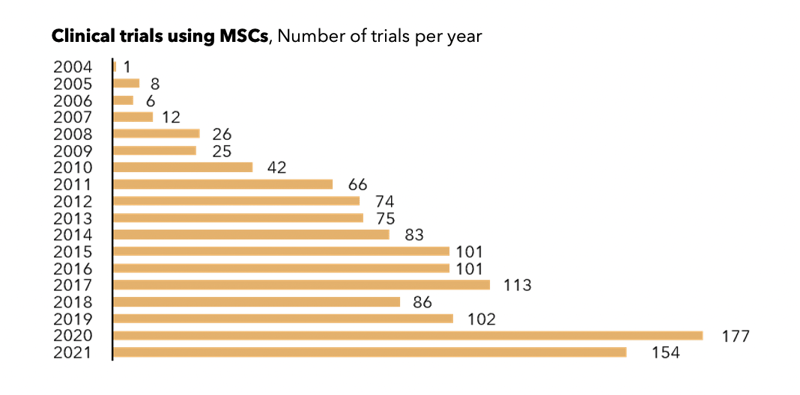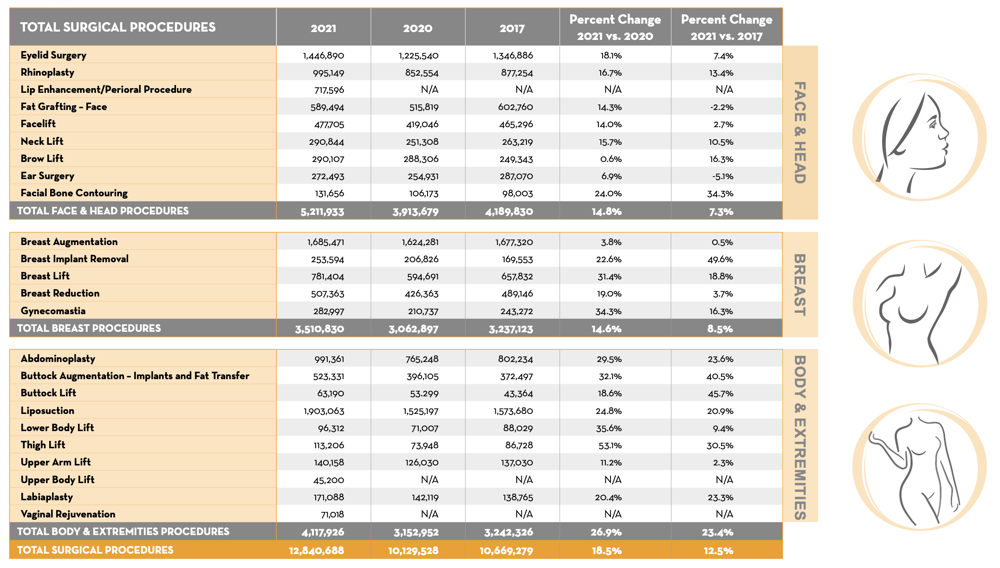MSCs and Procedure
StemMedical® core science is focused on producing very high quantities of potent autologous MSCs

High biologic potential and safety of MSCs
MSCs are multipotent stem cells that are readily available from several sources (bone marrow, adipose tissue, etc.)
MSCs are capable of giving rise to several tissue types, mainly within the mesodermal lineage, but even more so, MSCs are capable of controlling inflammation and aiding with vascularization.

MSCs are considered as very safe in use. Since 2004, more than 10.000 patients have been dosed with MSCs in more than 1.300 clinical trials.
Clinical use is seen today in a diverse range of diseases such as graft versus host, spinal cord injury and osteoarthritis.

Fat grafting
Fat grafting with autologous adipose tissue - the patient’s own fat tissue - is considered an ideal filler in cosmetic surgery. It's an increasingly popular alternative for cosmetic breast augmentations versus an unnatural augmented appearance and the risks associated with breast implants
In traditional fat grafting, the surgeon will “harvest” fat from one part of your body, typically the belly, thigh or lower back region. The harvested fat, or lipo-aspirate, is subsequently washed and purified followed by reinjection into the areas that need augmentation.
Although fat grafting has been greatly optimized since it's invention, it continues to struggle with unpredictable outcomes due to low volume resorption, also called fat retention. Due to these varying and often low fat retention rates (25-80%), the surgeon may need to repeat the fat grafting procedure several times to achieve the desired result or augmentation.
Pros
- Uses your own fat (not synthetic dermal fillers), with little chance of an allergic reaction and a natural result
- Harvests unwanted fat from body areas via liposuction
- Fat grafting is a long-lasting treatment to reverse volume loss, and fat that survives the transfer process is considered permanent
- This form of augmentation and contouring has high patient satisfactions
Cons
- Fat grafting requires liposuction to harvest fat
- Fat grafting is associated with unpredictable and potentially asymmetrical results due to the low retention rates
- Change in BMI (weight reduction) can affect the augmentation since fat cells will shrink
Fat grafting is an increasingly popular and often used surgical procedure. The International Society of Aesthetic Plastic Surgery (ISAPS), estimated the number for breast augmentation procedures with fat grafting on 137.000 per year, and for facial fat grafting on 589.000 per year.


Stemform procedure
After the first minor liposuction, the lipo-aspirate (fat), is transported to the STEMFORM® laboratory where it's washed and SVF (Stromal Vascular Fraction) isolation procedure is performed. Afterwards, the SVF cells are cultured for 2-3 weeks in a closed cell culture environment. Finally, the mesenchymal stem cells are harvested, washed, and examined before they are released and transported back to the clinic. The final STEMFORM® product contains a minimum concentration of 20 million MSCs per ml of fat
The first procedure is the minor liposuction, performed under local or short-term, general anaesthesia. Fat will be harvested for isolation, and the adipose-derived stem cells will be expanded in the STEMFORM® laboratory. The second procedure is the breast augmentation itself, which takes place under general anaesthesia. During the operation, the patient will initially undergo a major liposuction procedure. The newly aspirated fat will then be combined with the expanded adipose-derived stem cells before being injected into the breasts. The expanded stem cells ensure maximum volume retention of the newly transplanted fat.
After both procedures the patient will go home within 3-4 hours of the operation and the patient will get back on their feet quickly. After the first procedure, the minor liposuction, the patient must wear compression clothes both day and night throughout the period (two weeks) leading to the second procedure. After the second procedure, liposuction and breast augmentation, the patient must wear compression clothing on the liposucted areas for six weeks.